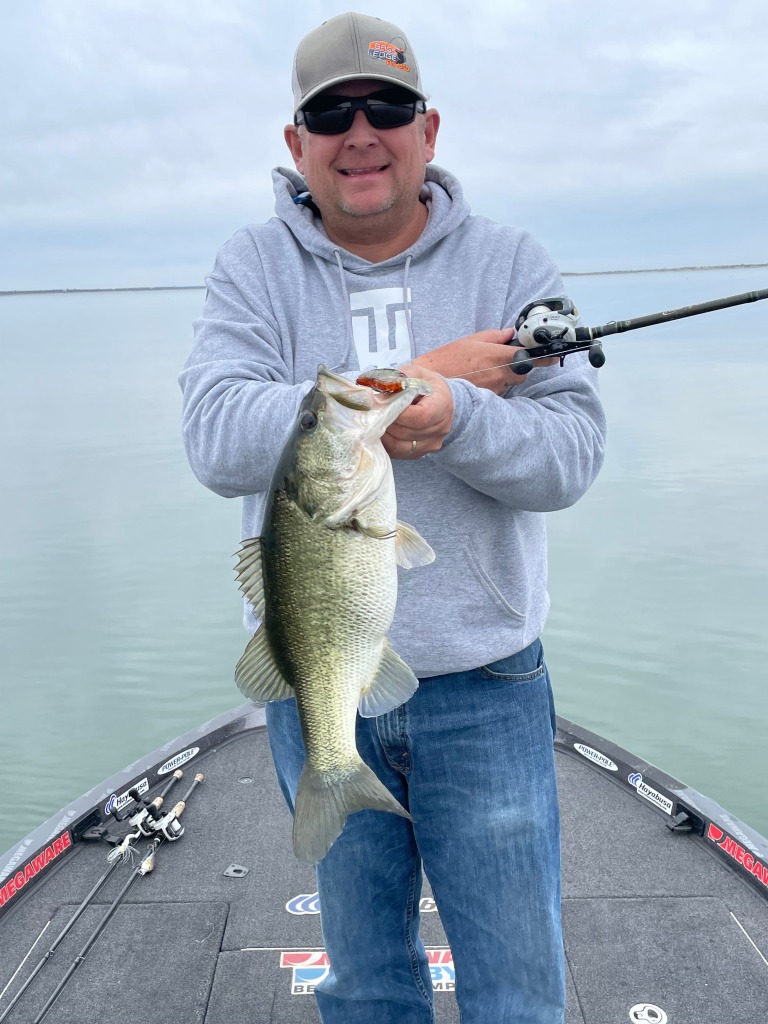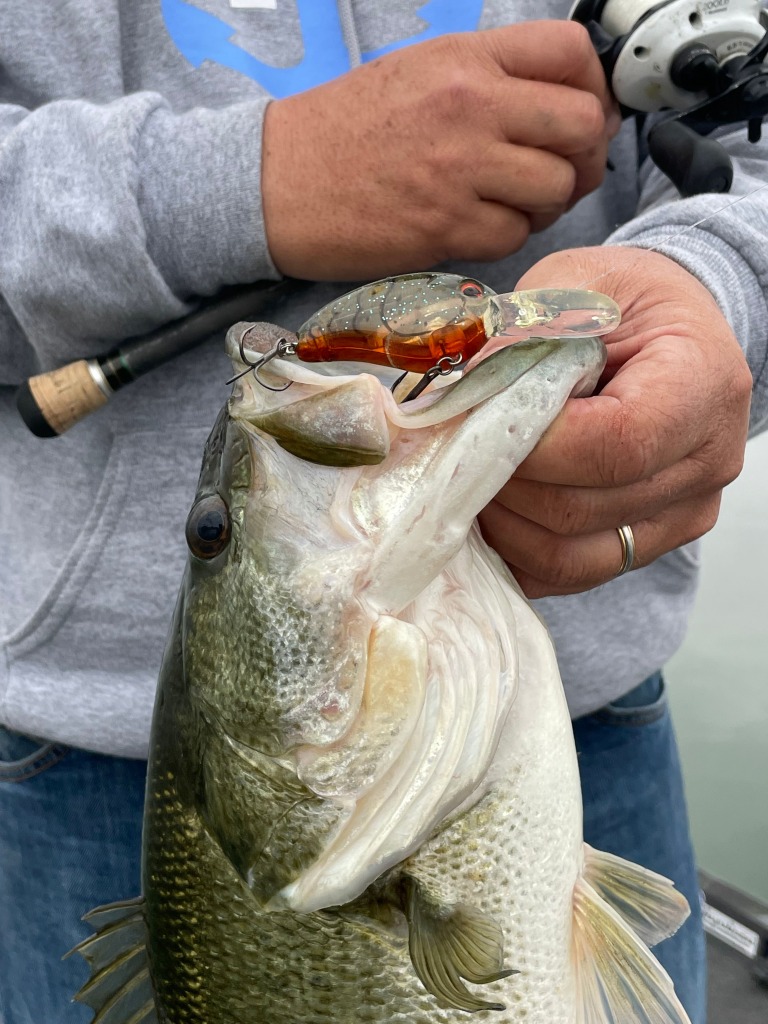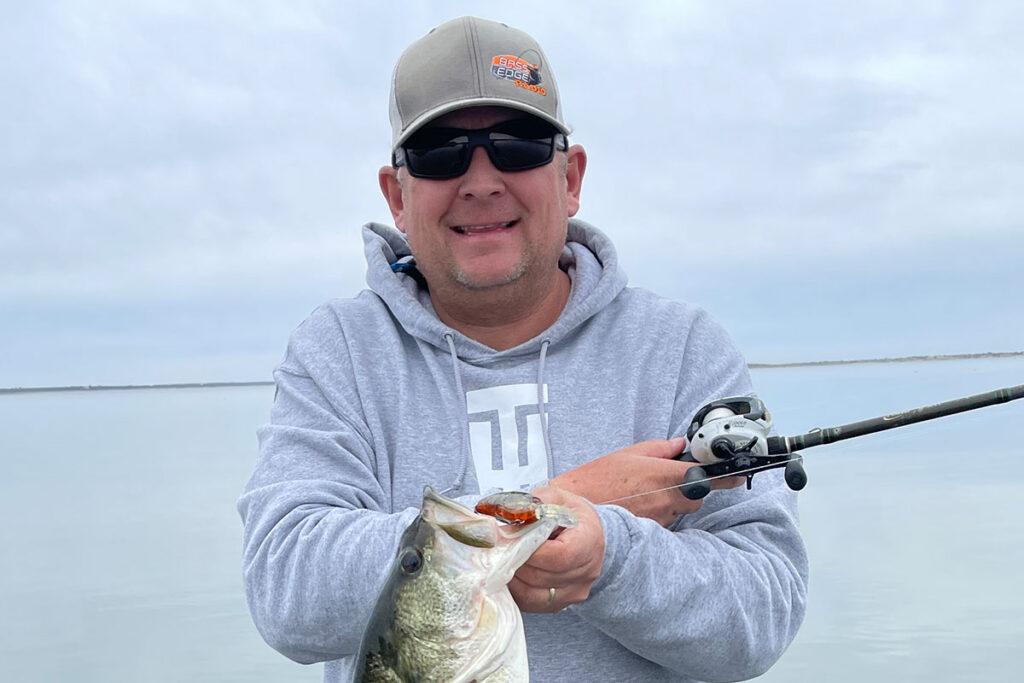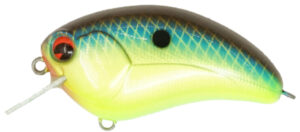As fall quickly faded away, the onset of winter can be a mystery for many anglers but not so for IMA Pro, Kurt Dove of Del Rio Texas. Over the years Dove has found consistent success by targeting shallow bass with moving baits.

Follow the Bait
“Hard baits are important for me this time of year because of the type of cover that the fish will tend to transition to during this early winter time frame,” said Dove “You have water temps decreasing, fish moving from the back of pockets where they have been chasing shad particularly in the late fall. I feel like the fish begin to transition from those late fall patterns where they are really chasing bait balls when the water starts getting cooler. In the southern part of the country where I live, I am talking about the high 50’s when this movement starts to take place. By the time the water hits the mid 50’s, the fish are really heading back out toward the main lake. The bass whether it is largemouth, spotted, or smallmouth are not able to pin the bait as much as they could in the backs of creeks in late fall, but they’re gonna get on these secondary main lake points and still be relatively shallow.”
While there are also plenty of fish in deeper water, Dove believes that the more catchable ones are the shallower fish that occupy the 0-15 foot range and since they are still extremely bait oriented he favors a horizontal presentation as opposed to a vertical one. As such, crankbaits like the IMA Pin Jack 200 and the Beast Hunter are important elements of Dove’s game plan.
Deflection Is Key
“The key with these two particular crankbaits is that if you orient your depth correctly, making contact with these secondary points, you can really trigger these fish to bite,” Dove explained. “In my opinion, these fish have fed up over the last 2 to 4 weeks and it’s harder to get them to bite a suspended bait like a jerkbait or a swimbait. You have a little bit more opportunity to get a fish to react by making contact with hard cover, generally speaking I am thinking about rock.”
“If you have a longer flat style point that is 0-5 feet that has some good rock on it before it drops off into deep water, that is where I want to use the Pin Jack, you really need to concentrate on making bottom contact. The thing that makes the Pin Jack special is that it has a little wider wobble than the Beast Hunter and I like that wider wobble in the shallows because it doesn’t get hung up as much and it has that extra special hunting action, it’s just a deadly combination.”
The Beast Hunter runs deeper than the Pin Jack. It has a larger profile and a tighter wobble. Dove employs the Beast Hunter when he is targeting fish in the 5-10 foot range and again his primary objective is to make contact with the rocks and to generate the proper deflection.
Boat positioning and casting angles are extremely important. “For me the angle has to do with where does my depth drop off,” said Dove. “If it is a long flat point then I want to sit straight off the front of the point where I feel the fish are sitting on the flattest part waiting for the bait fish to scurry across as they move to deeper water. On the deeper side, I’ll use the Beast Hunter because I want more depth. As far as positioning the boat in a wind scenario I am always going to position the boat downwind because I want to make precise casts to the point, I’m really not fan casting, I’m fishing the crown with the Pin Jack or with the Beast Hunter, just off the crown.”

Tackle Specific
The Texas Pro, prefers a medium action 7′ casting rod when fishing the Pin Jack. With the larger Beast Hunter, he opts for a longer 7’6” rod with the same action. His rod choices have little to do with their ability to fight the fish and more to do with how they enable him to correctly present his crankbait. “When my rod moves, when it has good bend, it has the flexibility to absorb the impact of the bait hitting the cover, it allows my bait to run more natural and achieve that hunting deflection.”
Dove matches his cranking rods with a 7:1 gear ratio casting reel which affords him the flexibility to comfortably slow down or speed up his retrieve in order to give the fish a different looks. Depending on the different type of rock he is fishing, he’ll spool up with 10 – 12lb fluorocarbon line. For smaller pea gravel type rock, he prefers 10lb and if it’s a bigger chunkier style rock he’ll upsize to 12lb line. Dove’s choice is entirely based on achieving maximum abrasion resistance and has nothing to do with achieving maximum running depth as he always knows he is fishing shallow enough to maintain bottom contact.
Crankbait color is an important consideration for Dove. He likes to match bait color with the conditions of the water. In clear water he prefers Watermelon Craw and Chartreuse Shad. Fred’s Perch is another option when fishing the Beast Hunter. If the water is stained, he opts for Hot Craw and shades of chartreuse. This equates to Chartreuse Smash for the Pin Jack and Citrus Shad for the Beast Hunte.





